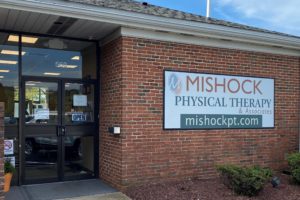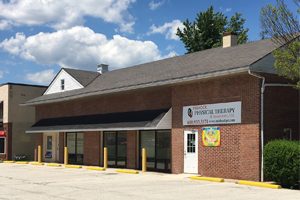Fascial Manipulation
There is a new technique used at Mishock Physical Therapy & Associates, called the Fascial Manipulation. This remarkable procedure allows us to detect and treat areas of dysfunctional muscle or fascia that may be leading to acute or chronic muscle pain and dysfunction. Fascia is a thin strong soft tissue that forms a continuous covering over muscles, nerves, and organs.
Fascial Manipulation is a technique that was developed in Italy over 35 years ago by an Italian physical therapist, Luigi Stecco. He developed a system of assessment and treatment of these muscle or fascial restrictions. Anatomical studies have now supported his claims, demonstrating that in each muscle there are motor points (areas where the nerve meets the muscle). It is believed that during injury these points become densified (hardened) adversely affecting the muscle nerve receptors resulting in abnormal tension in the fascial system. This in turn causes aberrant stress in that region of the body leading to pain and dysfunction. Often the pain may be at a distant site from where the muscle problem is. For example, chronic low back pain may be due to dysfunction tissue in the middle back, hips, or even the ankle.
Fascial Manipulation begins with a complete history and functional evaluation to determine what fascial plane or planes appear to be most involved. This is followed by palpating (touching) the motor points that relate to the painful movements, looking for densification, tenderness, and a referred pain pattern (pain that radiates to a distant area).
Treatment involves the clinician’s hands using pressure and movement on these dysfunctional motor points and fascia. In the beginning we use light pressure and movement attempting to go deeper, as tolerated by the patient. Each point is worked on for 2 – 5 minutes and then we move onto the next dysfunction point. The aim is to restore gliding between the fascia and release the dysfunctional motor unit. The Fascial Manipulation technique is followed by traditional physical therapy such as: stretching, strengthening, aquatic therapy, patient education, and modalities (ice, heat, ultrasound, electric stimulation) with the goal of treating the cause of the problem and preventing it from returning.
The Fascial Manipulation Technique is currently being used by many professional sports teams, chronic pain clinics, and work injury providers. Furthermore, there are a number of research studies demonstrating the technique’s anatomical and clinical efficacy.
More common diagnoses that respond well to Myofascial Manipulation Technique:
|
|
Mishock Physical Therapy Provides Fascial Manipulation at all Locations:

Mishock Physical Therapy
Boyertown
Ph: (610) 845-5000
Fx: 610.845.5011
560 North Route 100
Bechtelsville, PA 19505

Mishock Physical Therapy
Gilbertsville
(610) 327-2600
(610) 327-9050
1806 Swamp Pike
Suite 100
Gilbertsville, PA 19525
Mishock Physical Therapy
Limerick
ph: (484) 948-2800
fx: (610) 792-3044
Freedom Valley YMCA at Spring Valley
19 W. Linfield-Trappe Rd.
Limerick, PA 19468
Mishock Physical Therapy
Phoenixville
ph: (610) 933-3371
fx: (610) 933-3376
131 Nutt Road
Phoenixville, PA 19460
Mishock Physical Therapy
Skippack
ph: (610) 584-1400
fx: (610) 584-5224
3887 Skippack Pike
Lower Level
Skippack, PA 19474



